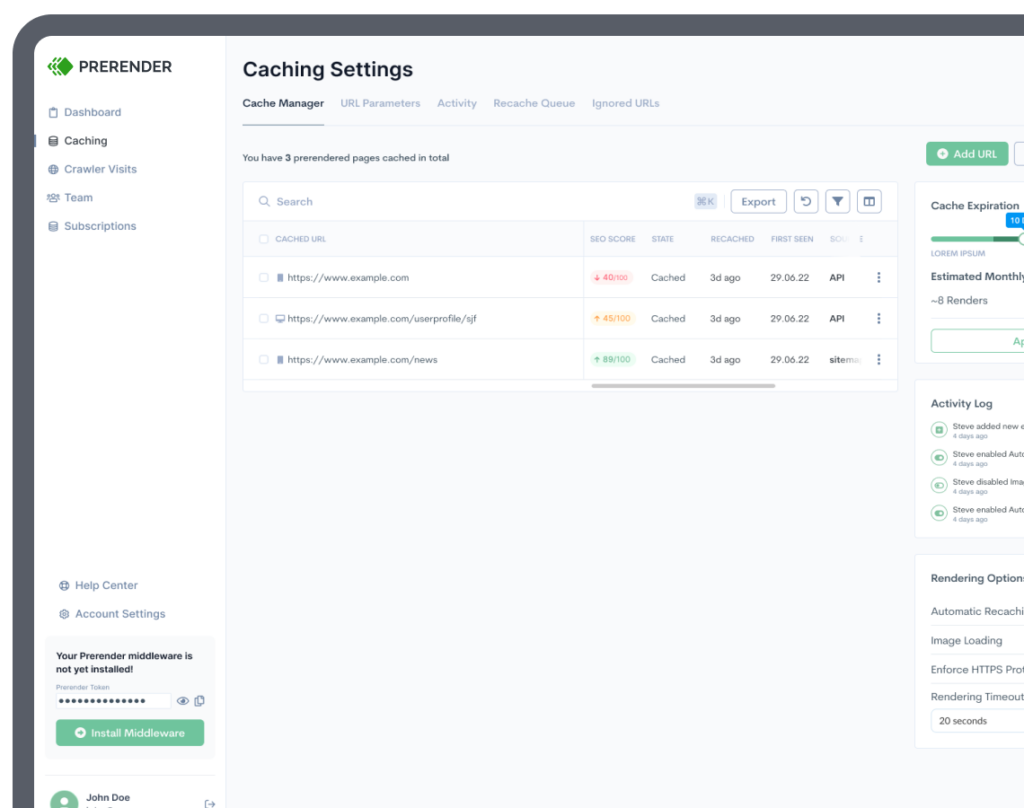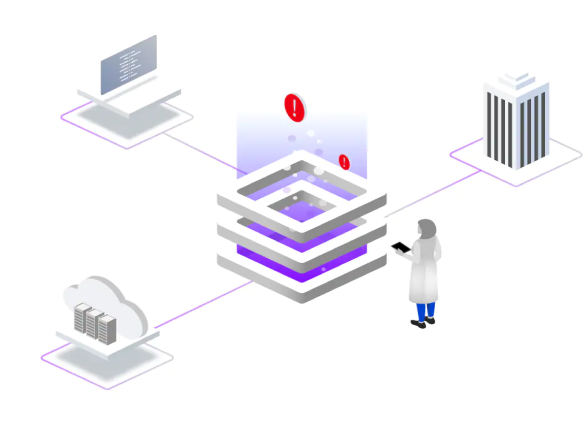Better Response Times
Scale Your Server Response Times
Enjoy server response times under 50 milliseconds without sacrificing user experience.
Despite all the positives of using JavaScript, there’s no denying that the framework is processor-heavy: it slows down response times significantly, compromising functionality and SEO.
To avoid this, you can use diagnostic tools to identify issues in your source code, or you can use Prerender, a dynamic rendering solution, to optimize your web pages.
Better SEO Scores
A Metric to Boost SEO
Server response time (SRT) is an SEO metric and component of PageSpeed (a Google ranking factor). Your SRT score depends on the traffic your website receives and the HTTP resources it has to load before a user can interact with it. It is during this process that many users bounce, and sites get penalized.
As a result, teams resort to costly workarounds like SSR that end up affecting user experience (UX). Prerender, on the other hand, lowers response time.
Higher Rankings
Get Better, Lower SRT
- Make use of a trustworthy CDN to deliver content quickly in any location
- Optimize images by compressing them without decreasing image quality or converting them to formats optimized for browsers (such as WebP)
- Leverage browser caching to load static content effectively
- Optimize your web page’s use of JavaScript
Leave Your Users and Google Satisfied
Try Prerender for record fast server response times.
Get started with 1,000 URLs free.

Server Response Time FAQs
Learn about Prerender, technical SEO, and JavaScript on our dedicated FAQs page.
What is Server Response Time (SRT)?
SRT is the time your server needs to respond to a user’s request, such as loading a page or opening a link. The shorter it takes, the healthier your website performance is, and the likelier you’ll be ranked high. Google recommends keeping your SRT under 200 milliseconds.
How Does Server Response Time (SRT) Impact SEO Ranking?
Server Response Time (SRT) is part of Google PageSpeed Insights, which is a ranking factor.
Since Google loves pages that respond fast, having a website with a low SRT can help boost your content’s SEO scores and land it on the top SERPs.
How Does Prerender Reduce My Server Response Time (SRT)?
JavaScript-heavy web pages typically have a high SRT (meaning: slow response time).
To process a request, search engine bots must go through three steps: crawling, indexing, and rendering. Prerender renders the JS pages in advance—eliminating the rendering step altogether. As a result, your JS pages are now processing requests faster without compromising the interactive traits of JS pages for humans.
Learn More about Server Response Time (SRT)?
Want to get the hang of optimising server response time for your dynamic content and JavaScript websites? Check out Prerender’s awesome technical SEO resources – we’ve got everything you need to know. Looking for our technical documentation? Find it here.

Trusted by 75,000+ Brands Worldwide
Serving +2.7 billion pages to crawlers.